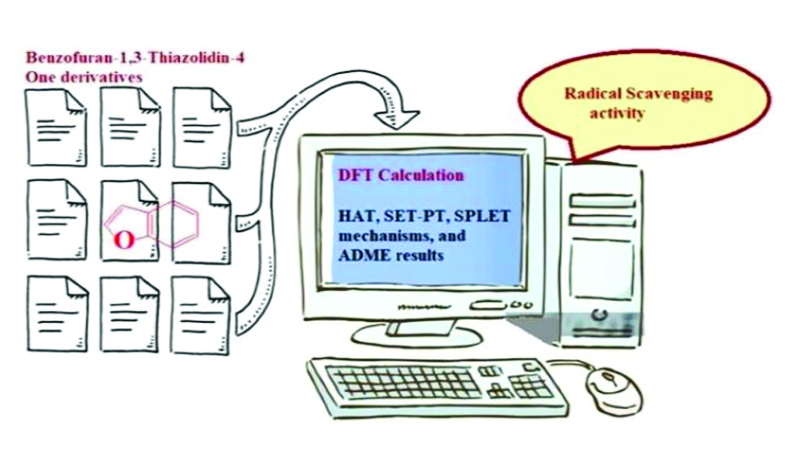Radical Scavenging Activity: DFT and Multilinear Regression Studies of Benzofuran-1,3-thiazolidin-4-one Derivatives
DOI:
https://doi.org/10.17344/acsi.2024.8963Abstract
The free radical scavenging activity of benzofuran Schiff base and thiazolidinone derivatives has been investigated using the density functional theory (DFT) calculations. Three primary mechanisms were developed: sequential proton loss electron transfer (SPLET), single electron transfer followed by proton transfer (SET-PT), and hydrogen atom transfer (HAT). Several thermodynamic descriptors were computed in both gas and solvent phases at the B3LYP/6-311G and 6-311G (d, p) level of theory. Our findings suggest that compounds 3a, 3c, 3f, 4d, and 4e may scavenge free radicals through one of these three pathways. The results indicate that SPLET is favored in polar environments, while HAT is the thermodynamically preferred mechanism in the gas phase and non-polar solutions. Electron-withdrawing groups (EWG) attached to the π conjugated system at the N position of the benzofuran derivatives decrease bond dissociation
enthalpies (BDE), while electron-donating groups (EDGs) are helpful to decrease the ionization potentials (IPs). The results of the multilinear regression statistical analyses indicate a good correlation between the IC50 and ionization potential, in addition to the proton dissociation enthalpy, proton affinity, and the electron transfer enthalpy descriptors.

Downloads
Published
Issue
Section
License
Copyright (c) 2025 Fella Ati, Soraya Abtouche, Boubekeur Maouche, Meziane Brahimi

This work is licensed under a Creative Commons Attribution 4.0 International License.
Except where otherwise noted, articles in this journal are published under the Creative Commons Attribution 4.0 International License
